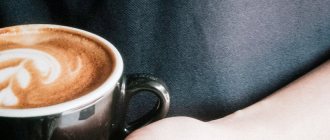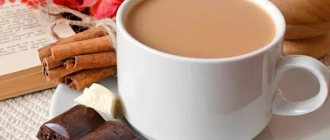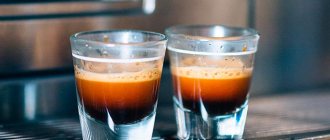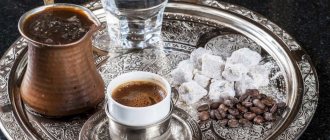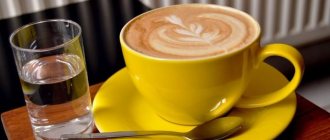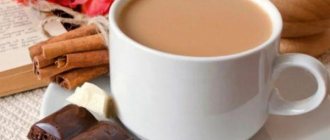The tradition of holding tea parties appeared in Rus' at the beginning of the 13th century. Only nobles and merchants could afford to drink loose leaf tea. The large table was set with a snow-white tablecloth, porcelain service and various sweet treats. Be sure to light the samovar. Historians claim that more than 20 cups of the drink were drunk during the feast.
Currently, it is customary to drink tea and any other drink from cups, glasses with coasters, tempered glass glasses and mugs. Any consumption of food or drink should bring taste and aesthetic pleasure. Especially if such utensils are used for their intended purpose. After all, the shape and volume of the dishes are specially developed by manufacturers and tasted repeatedly to fully reveal the taste and aroma.
For many, there is no difference between a cup and a mug. However, there are differences.
From the history of mugs-cups
Much that explains to us the differences between vessels that are essentially identical in appearance and purpose can be found in the history of the creation of these drinking utensils.
First cups
As the first cups, people used all sorts of devices that vaguely resembled modern cups: these were the horns of wild animals, the shells of ostrich eggs, later clay cups and products made from a single piece of amber appeared. Yes, such dishes looked quite impressive, but drinking from them was hardly very convenient. Firstly, such cups could not be placed on a flat surface and had to be constantly held in the hand. Secondly, such cups practically did not retain the heat of the contents. The very first cup, as history claims, was given to the world by China - it was intended for drinking expensive and rare drinks, to which only the nobility and people from high society had access. This cup was made of clay or porcelain, it did not have a handle, and its shape was more like a saucer.
The handle was “attached” to the cup by the British in the 18th century - this made it possible to drink hot tea without burning your hands.
First mugs
The mug appeared long before cups and was an integral attribute of both peasants and rich people. Mug means “jug” in Polish. This is because the first mugs had a distinctive spout and lid. The lid served peasants in the field as protection against insects getting into their drink. These mini jugs, or the ancestors of modern mugs, appeared in the 15th century and were cylindrical in shape. Due to its large volume (up to 500 ml), the mug served as a vessel for water from which food was prepared.
In pagan times, mugs were measures of the volume of liquid, so a mug without a handle of large volume was called a glass and was intended for serving mead.
Standard mug: how many ml is in it?
Since the industry has reached a high level of development, this tableware can be made from:
- Glass;
- Ceramics;
- Metal;
- Trees;
- Porcelain;
- Plastic.
The choice of kitchen utensils will primarily depend on its intended purpose. But it is worth considering that a standard mug holds 250 milliliters , regardless of what material it is made of.
For example, plastic and metal mugs are most often used in tourism, during travel or long trips. They differ from others in their low weight and good impact resistance, and are not subject to deformation. The volume of such products averages 250-300 ml . On a hike or on vacation, you don’t have to worry about your mug breaking.
Tableware made from glass or ceramics mainly found its use in home use. Every housewife wants to have beautiful mugs of original shape and design in her kitchen.
Cheap options involve plain-colored dishes, while more expensive ones are represented by mugs with drawings and prints or hand-painted ones. Since such dishes are used in everyday life for drinking tea or other drinks, for example, juices or carbonated sweet water, buyers try to choose a large-capacity mug. Accordingly, manufacturers focus on producing products from 250 to 420 milliliters.
Porcelain mugs are considered the most expensive. They often find their use in expensive restaurants or other establishments. The same housewives who have such items in their dining arsenal use them when receiving dear guests, and some simply collect them.
Porcelain products, as a rule, are decorated with paintings, beautiful designs and have various decors, and their capacity is often no more than 200 ml.
The main differences between a mug and a cup:
- The thickness of the walls of the mug is greater than that of the cup. The cups are thinner and more elegant, the tea cools faster in them
- An important difference is the volume: for a cup it is up to 180-200 ml, and a mug can be up to 500 ml
- The cup, as a rule, comes with a saucer, and the mug is sold alone. This is because when the edges of the thin cup are heated, the tea is poured into the saucer. A mug does not have such a need, so according to etiquette it is not customary to serve it with a saucer. The mug must have a handle and a stable bottom
- Antique cups have two handles on the sides. By the way, there are also modern two-handed models of cups
- Cups are more often used for ceremonial serving or in catering establishments (cafes, restaurants). Mugs are more practical and popular in daily life
- The mugs are universal and suitable for drinking any drinks in large quantities. The same cannot be said about cups: they are intended for tasting rare varieties of tea and coffee, as well as for official receptions and demonstrating respect for the guest
- The cup has a spherical shape and is lower, and the mug is always oblong or conical and tall
How many grams of sugar are in one faceted 250 ml glass and a 200 ml glass: measure and weight of sugar
How many grams of sugar are in one faceted 250 ml glass and a 200 ml glass: measure and weight of sugar
Everyone knows that in a faceted glass with a rim there are 250 ml of water. But sugar is heavier than water, so its weight values will be different. How many grams of sugar are in one faceted 250 ml glass and 200 ml glass? Measure and weight of sugar:
- The measure of a large faceted glass with a rim is 250 ml , the weight of sugar in such a glass is 200 grams if it is filled to the brim without a slide.
- The measure of a faceted glass without a rim is 200 ml, the weight of sugar in such a glass is 160 grams , if it is filled to the brim without a slide.
If you have a measuring cup, you can measure the weight in it. To do this, multiply the required weight in grams by 1.25 and get the volume in milliliters. If you need to calculate the other way around and convert milliliters to grams, then multiply the number of milliliters by 0.8. See the table for an example:
What drinks are cups and mugs intended for:
In fact, the culture of drinking today allows you to choose a convenient way to drink. But still, based on the differences in vessels, there are drinks that are more convenient to drink from a mug, and there are those that are only suitable for a cup
- It’s still more convenient to drink coffee or strong tea from a small cup
- The mug, thanks to its large volume, does not pose any obstacles to the choice of contents. It is convenient to drink large amounts of tea from a mug and, if you want to extend your tea drinking, this is because the thick walls of the mug retain heat longer. Also, you can not only drink a prepared drink from a mug, but also brew it in it (mugs with strainers for brewing)
- Mugs are more convenient for cocoa with or without additives, for cold or hot drinks, and from some mugs you can even drink broths and other first cold or hot dishes
How to measure sugar in a glass?
How to measure sugar in a glass?
You can measure sugar with a spoon and a glass.
- If you need a lot of this product, for example, for jam, then measuring with a spoon is inconvenient. How to measure sugar in a glass?
- The weight of the product in a glass is usually indicated without a slide. To make the desired weight of the product, put sugar in a heaped glass and run a knife along the top to remove excess.
- Accordingly, half a glass will be equal to half a measure. Of course, it will not be possible to measure exactly down to the gram, but the approximate amount will be known.
Tip: If you need an exact weight of sugar, then it is better to use a kitchen scale or ask to weigh the product at any nearby store or market.
Recommendations for tea lovers:
- A porcelain cup enhances the aroma of tea and adds solemnity to tea drinking
- It is believed that the volume of the cup should not exceed 100 ml in order to reveal the taste and aroma of the drink at its optimal temperature. The additional volume of such a cup allows you to add milk or cream to tea, which cannot be said about 20-30 ml bowls for the Chinese tea ceremony
- For the Chinese tea ceremony, you must choose a cup without a bowl type handle; it should fit in your palm
- The choice of tea cup depends largely on the country in which the tea party takes place: green tea - from traditional Chinese dishes, black - from wide and voluminous cups with handles
- Due to the high caffeine content (more than coffee!), tea is usually drunk after meals.
- Black tea should not be brewed twice
- It is not recommended to interrupt the delicate taste of green tea with sweets. So, it’s better to serve a nut mix or a bowl of fresh fruit with a cup of green tea.
- But black tea accepts whatever your heart desires - from light marshmallows to high-calorie cake or chocolate
How many glasses of sugar are in one kilogram?
How many glasses of sugar are in one kilogram?
To calculate how many glasses of sugar are in one kilogram, you need to again use simple mathematical calculations. It was stated above that in a large faceted glass with a rim, filled to the top, there are 200 grams of sugar. Accordingly, in 1 kilogram (1000 grams) there are 5 glasses of sugar: 1000 grams: 200 grams = 5 glasses.
Grand-Lux bestsellers
Oxford cup 100ml – 160 rub.
Juicy peach – love at first sight!
This particular shade is the hit of the season and the top seller this season. A mug made of high-quality porcelain retains heat, is resistant to cracks and chips and will last a long time, delighting with its practicality and unique appearance.
Set of Crystalite Bohemia Origami cups 120 ml – 2080 rub.
“Crumpled paper” - this trend in tableware fashion has long won the hearts of lovers of originality and remains at its peak today. A miniature crystal glass cup will perfectly convey the unique shade of your favorite tea or coffee. It has a comfortable handle, a stable bottom and a universal design for any serving.
Tea cup Benedikt Silver 200ml – 870 rub.
Lilac is a favorite color among many fans of romantic tableware, which is suitable for everyday gatherings in the kitchen, and can also decorate a festive table with dignity. Decorate your tea party with a luscious palette of Benedikt mugs.
Set of cup and saucer Caroline Artigianato Ceramico Pumpkin – 2660 rub.
Cozy, like all Italian ceramics, and also practical - a cup from which you can not only drink, but also brew aromatic tea in it. It will not only be a practical addition to your kitchenware, but also a creative gift for a tea lover.
Tea pair Oxford 100ml – 920 rub.
The rigor of geometry gives rise to romantic decor. After all, tea is a whole philosophy of life, and Oxford porcelain is a philosophy of creating beauty from nature. Enjoy yourself too.
Mug Nela Time Geese jirka 300ml – 400 rub.
Especially for those who love more! Legendary design and large volume. Suitable for tea, cocoa, tea with milk or cream and everything you love so much.
Nela Time mug White pattern – 330 rub.
The large, very comfortable handle and delicate design of the mug in a minimalist style will make this product one of the most beloved in your kitchen. Relief embossing and high quality porcelain distinguish this mug with gold lining.
Barrel mug Royal Classics Huawei ceramics Bears — 290 rub.
The bears were riding a bicycle... Give your child such a barrel-shaped mug, and he will always like the contents. Warm milk, tea, jelly or compote - everything will be drunk to the bottom!
Quality and safety are confirmed by safety certificates.
Mug Queen's Crown Crown Wildflower 500 ml – 1300 rub.
The mug is very large. It is not only roomy and practical, but also spectacular - classic style decor and two handles on the sides distinguish this product and turn it into a work of tableware art. You should definitely have this “exhibit” in your kitchen.
Tablespoon
Any housewife will tell you that using a small spoon is not very convenient for measuring liquid foods. Especially when a rather large volume is needed. In this case, it is worth considering a regular tablespoon. It is approximately three times larger than the small one, which gives it a definite advantage. So, 200 ml - how much is this in tablespoons?
When measuring the volume of milk in a spoon, it was found that it holds 20 ml. Therefore, to measure 200 units you will need to take 10 spoons of milk.
How much is 200 ml of water in spoons? Although the volume of a teaspoon of water is equal to the volume of milk, they are slightly different in this measuring device. So, 18 ml of simple liquid is placed in a tablespoon. This means that to get 200 units you need to take 11 full spoons and a few more drops.
The next task is to find the answer to the question: 200 ml of vinegar is how much in spoons? As for this liquid, everything is simple. Its density is almost identical to water, which means that to get 200 units of essence, you need to take 11 whole spoons of water and add a few more drops.
Why is it important to drink water?
Water is the source of life; it plays a huge role in nature. So what are the benefits of water?
- Using water you can control your weight. If you replace any other liquids with water, then in 2 months you can lose more than 5 kilograms without any effort.
- Water reduces appetite.
- Helps speed up metabolism, which helps with weight loss.
- Energy. Water contains many minerals that nourish and enrich the body. Drinking a glass of water in the morning on an empty stomach will fill you with energy.
- Healthy skin. Water cleanses the stomach of toxins, so the skin becomes smooth and radiant, and wrinkles will appear more slowly.
- Strong bones and joints. Since bone tissue is 50% water, drinking it is an indispensable aid in strengthening them.
- Cleanses the kidneys, which improves their functioning.
- It has a good effect on the functioning of the heart. Water reduces the risk of heart attacks and strokes.
- Regulates body temperature.
- Reduces the risk of cancer.

